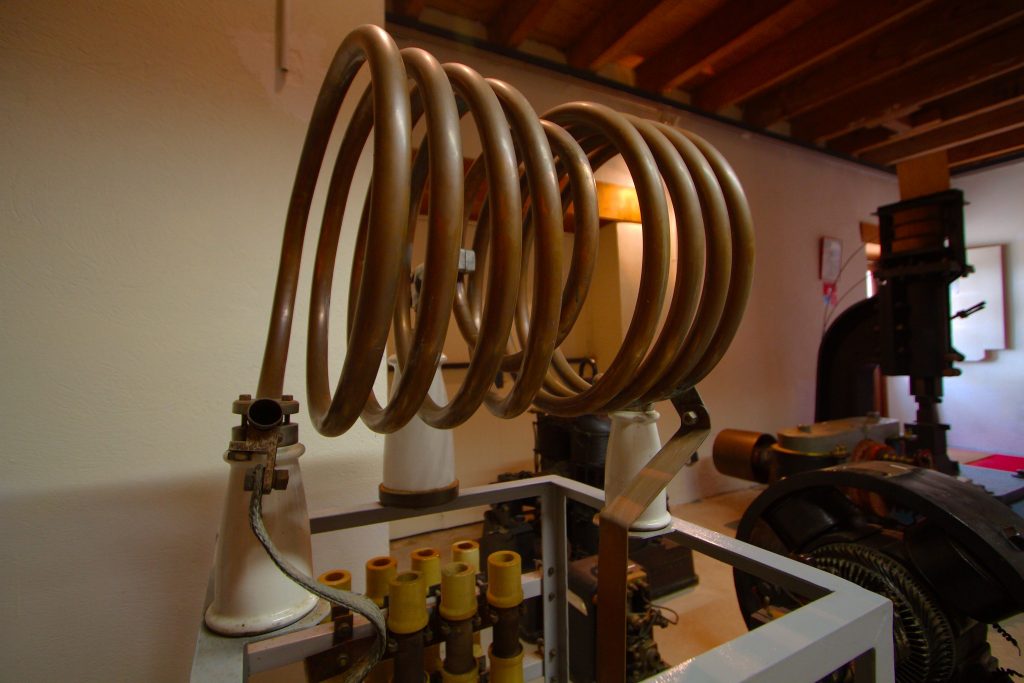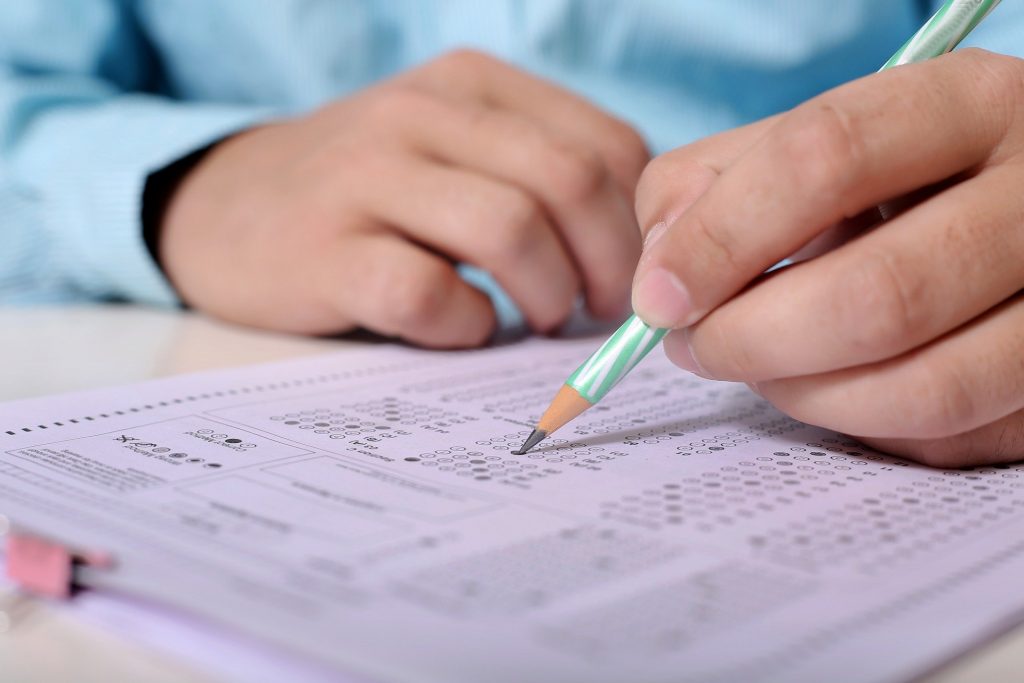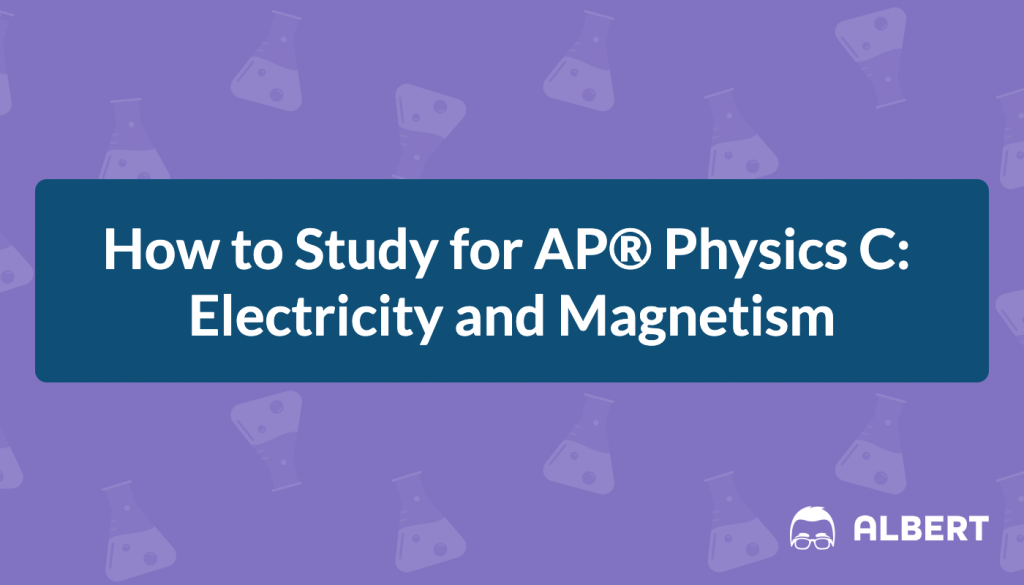The AP® Physics C Electricity and Magnetism exam is the second exam in the AP® Physics C series. In all likelihood, if you are looking to begin studying for this exam, you have previously studied for and taken the AP® Physics C Mechanics exam. You will find that the proper way to study for this exam, outlined below, is very similar to the proper way to study for the Mechanics exam, as the formats are almost exactly the same. For those who are new to the AP® Physics C exams and those with experience, continue reading for advice on how to get the highest score possible on the AP® Physics C Electricity and Magnetism exam.

You will need:
- Notes from class (if you took the class in high school)
- Prep book – The most recommended prep books by high school students are Barron’s and Princeton Review. Both books tend to contain practice problems and exams that are significantly harder than the actual exam.
- Flash cards – You can learn how to make your own effective AP® Physics flashcards here.
- Practice exams – You will find practice exams in your prep book, but try to find six to eight old AP® exams online as well. You can find the exams of the past several years at AP® Central, the official AP® exam website hosted by Collegeboard. Past AP® exams will give you the best idea of how will do on the exam, as the questions are very similar.
As you prepare to begin studying, make sure you are absolutely clear on the topics that will be covered on the exam. Below, you will find a list of the topics covered on the AP® Physics C Electricity and Magnetism exam, and the percentages of exam that each topic encompasses.
Topics Covered on the AP® Physics C Electricity and Magnetism exam
- Electrostatics – 30%
- Conductors, Capacitors, Dielectrics – 14%
- Electric Circuits – 20%
- Magnetic Fields – 20%
- Electromagnetism – 16%
As you can see,the exam covers all of the topics generally found in an AP® Physics C Electricity and Magnetism high school course. However, be aware of the fact that these topics will not be distributed as such across each section individually, but across the entire exam as a whole.The individual multiple choice and free response sections of the exam may cover one topic, such as magnetic fields, very heavily, with the other section not covering it at all to compensate.
Speaking of the multiple choice and free response sections of the exam, you should recognize that each section is meant to test you on different applications of the material you have learned. The multiple choice section tests for basic knowledge of the concepts and formulas of the course . In general, multiple choice questions will require you to use a formula or idea to find a solution to a simple problem. The challenge of this section is remembering the correct formula and applying it correctly. The free response section, on the other hand, tests you on your ability to apply formulas and concepts from different topics to a situation. All free response questions will require you to use multiple formulas and mathematical calculations to fully answer the question. If this is unclear, don’t worry. We will go over example free response and multiple choice questions from recent AP® Physics C Electricity and Magnetism exams later on in the article. Below is a more in depth comparison of the multiple choice and free response questions.
Multiple Choice Questions
- Tests breadth of information
- Simple questions – apply a formula
- Pros – if you know the applicable formula, you should get the question right
- Cons – You will not receive a formula sheet for this section, and there is no partial credit given.
- Tips – Always write down the relevant formulas before starting the section.
Free Response Questions
- Tests depth of information
- Extended questions – apply multiple formulas from different topics and your own derivations
- Pros – You will receive a formula sheet, and there is partial credit given.
- Cons – You will need to correctly use and derive formulas.
- Tips – Understand the types of questions you may come across
As you begin studying, you should start by reviewing all of the material that will be covered on the exam. Using your prep book and your notes from class, read over the main ideas of each topic, and note down important formulas. Doing a complete review will put you in a mindset to begin working on physics. At this point, it is also a good idea to print out the formula sheet that you will be given for the free response section of the exam so that you can familiarize yourself with the information you will have to complete the exam.
The AP® Physics C Electricity and Magnetism Multiple Choice Section

The key to doing well on the multiple choice section of the AP® Physics C Electricity and Magnetism exam is practice. It’s that simple. This section, as we mentioned earlier, is a test of your basic knowledge of all of the topics on the exam.It is also a test of your ability to answer a multitude of questions on several different topics within a short period of time. You will be given 45 minutes to complete 35 questions, so you will need to be able to answer every question quickly and accurately. In your prep book, you will find practice questions for the exam. You will find even more questions on AP® exams from previous years. Take as many of these as you can until you can complete two to three exams quickly and correctly within 45 minutes. Additionally, you will not be given a formula sheet for this section of the exam. Given this,you should use flashcards with the formulas on the back and a relevant AP® problem on the front to study the formulas you will need to remember for the exam. More information on how to create AP® Physics flashcards can be found here.
Now we will go over a practice AP® Physics C Electricity and Magnetism multiple choice problem from the AP® Physics C Course Description packet.
A proton and an electron are released simultaneously on opposite sides of an evacuated area between large, charged parallel plates. Each particle is accelerated toward the oppositely charged plate. The particles are far enough apart so that they do not affect each other. Which particle has the greater kinetic energy upon reaching the oppositely charged plate?
a) The electron
b) The proton
c) Neither particle; both kinetic energies are the same.
d) It cannot be determined without knowing the value of the potential difference between
the plates.
e) It cannot be determined without knowing the amount of charge on the plates.
This question seems like it requires you to recall a formula, but in actuality, it does not. Answers A and B cannot be true, as kinetic energy is based on charge, not mass and the, charges of protons and electrons are the same. Answers D and E cannot be true, as the potential difference between the plates and the charge on the plates would only matter if the charges of the particles were different, which they are not. Therefore the answer must be C.
The AP® Physics C Electricity and Magnetism Free Response Section

The free response section the AP® Physics C Electricity and Magnetism exam requires a different approach. Similarly to the multiple choice section of the exam, the key to doing
well on the free response section of the exam is practice. However, to complete the free response section correctly, you also must know how to apply your knowledge and complete calculations that you have not necessarily seen in class or in your textbook. In short, you should be able to adapt your bank of information to a given situation. Flashcards can also come in handy in the free response section of the exam,as there are vocabulary words that you must understand within the context of the exam to answer the question properly.You will be given 45 minutes to complete three free response questions, and you will receive a formula sheet. To study for the free response section, take as many practice tests as possible under testing conditions (45 minutes per section with no outside resources, and use the flashcards to fully answer the questions with as much work shown as possible. This is the only section where you will receive partial credit, so give yourself the best chance to get the most points on each question by showing all of your calculations.
Now we will go over a practice AP® Physics C Electricity and Magnetism free response problem from the 2014 AP® Physics C Electricity and Magnetism exam.
A rectangular loop of wire has mass M, length L, width L/4, and resistance R. It is initially moving to the right at a constant speed V, with no net force acting upon it. At the time t=0 the loop enters a region of length 2L that contains a uniform magnetic field of magnitude B directed into the page. The loop emerges from the field at time tf with final speed vf. Express all algebraic answers to the following in terms of M, L, R, B, v, and fundamental constants, as appropriate.
a) Derive an expression for the magnitude of the current induced in the loop as its right edge enters the field.
b) What is the direction of the induced current determined in part a)? (clockwise, counterclockwise)
This free response question from the 2014 AP® Physics C Electricity and Magnetism exam shows the different approaches that you will have to take within one question. In part A, you have to use equations that have been provided to find a solution. More specifically, you must substitute an equation for the electric field into an equation for current, taking into account the fact that the area of the loop in the field is changing with time. As long as you can do that, and show the relevant work, you will get full credit on that part of the question. In the event that you don’t come to the correct solution but have some of the correct work, you will receive about half of the possible points for the question. The part B requires you to recall concepts such as Lenz’ law to come to the conclusion that because the flux through the loop increase as more of the loop enters the magnetic field, the current will go in the clockwise direction to create an opposing magnetic field that is out of the page.
Using these tips, and the examples provided above, you are sure to score a high score on the AP® Physics C Electricity and Magnetism exam.
Looking for AP® Physics C: E & M practice?
Kickstart your AP® Physics C: E & M prep with Albert. Start your AP® exam prep today.









